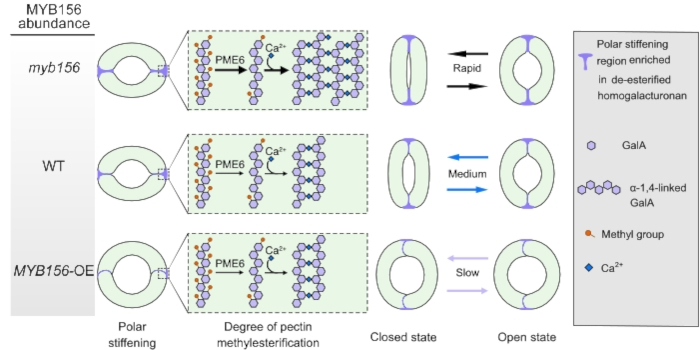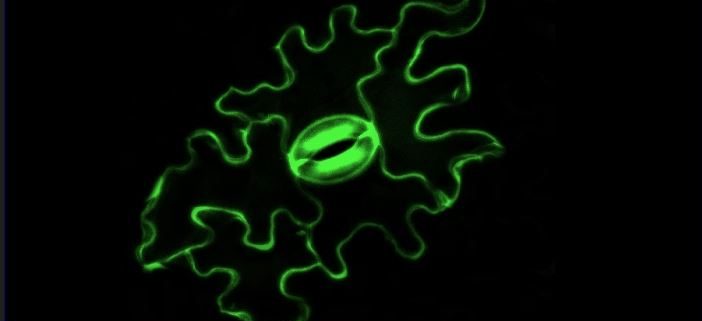Guard Cell Walls: Who Calls the Shots?
Zheng et al. demonstrate that polar stiffening of guard cell walls is essential for stomatal functioning.
By Lin Zheng and Hongzhi Wang
Beijing Key Laboratory of Agricultural Genetic Resources and Biotechnology, Institute of Biotechnology, Beijing Academy of Agriculture and Forestry Sciences, Beijing 100097, China
https://doi.org/10.1093/plcell/koad19
Background: Stomata, tiny pores on plant leaves, control gas exchange between plants and their environment. The functioning of stomata relies on the properties of guard cell walls. Traditional thinking suggests that the difference in thickness between inner and outer cell walls is crucial, but a recent idea highlights the importance of reinforced stiffness in the polar regions of the guard cell walls. However, the genes responsible for these wall properties are unknown. Thus, the mechanics of stomatal movement remain a mystery.
Question: What property of guard cell walls is vital for proper functioning, and can we manipulate it through genetic engineering?
Findings: The stiffness of guard cell walls, particularly in polar regions, is crucial for stomatal movement. An important player in this process is the MYB156 transcription factor in Populus. By regulating the activity of the pectin methylesterase 6 (PME6), MYB156 influences the amount of de-esterified pectin in the polar regions of guard cell walls, thereby affecting their stiffness. Loss of MYB156 leads to increased polar stiffness, causing stomata to respond more swiftly to various stimuli. Conversely, excessive expression of MYB156 decreases polar stiffness and impairs stomatal movement. The polar stiffening of guard cell walls plays a significant role in responding to environmental changes. This study sheds light on the mechanical properties of guard cell walls during stomatal movement, with the potential to enhance plant drought tolerance by engineering this specific property.

Next steps: Our research suggests that by enhancing polar stiffening, we can improve the performance of guard cells and plant drought tolerance. Genetic engineering techniques can be employed to target the MYB156 gene and enhance the function of guard cells. Additionally, further investigation into how polar stiffening is affected in mutated guard cells can reveal additional players involved in this process.
Reference:
Lin Zheng, Yajuan Chen, Liping Ding, Ying Zhou, Shanshan Xue, Biying Li, Jianhua Wei and Hongzhi Wang (2023). The transcription factor MYB156 controls the polar stiffening of guard cell walls in poplar. https://doi.org/10.1093/plcell/koad19




